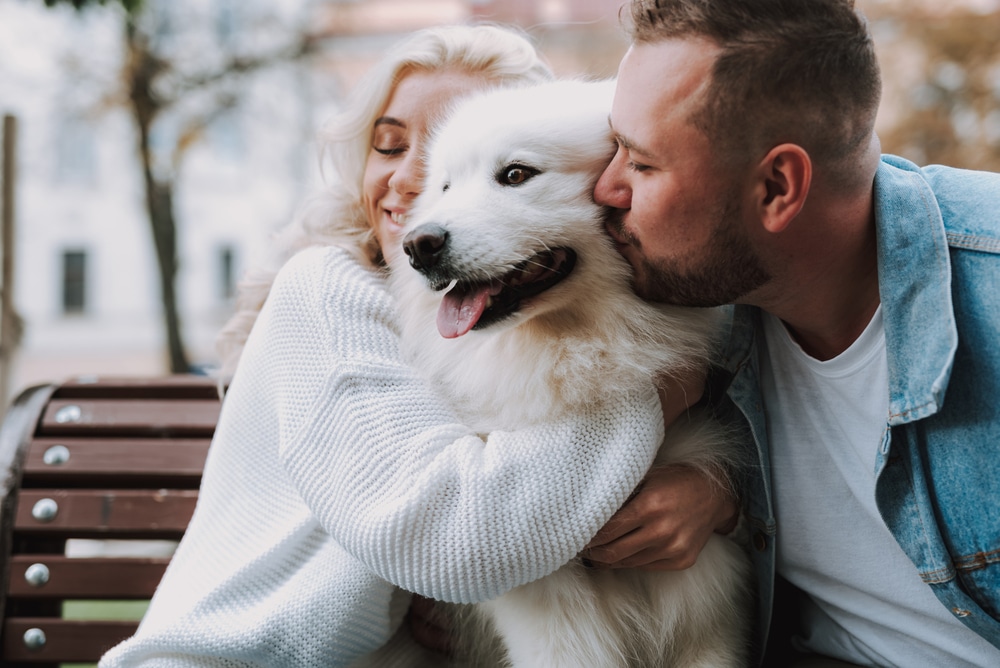The relationship between humans and dogs is based on trust and mutual understanding. Are you a dog owner and want to know whether or not your dog can comprehend your commands though? Can dogs understand us?
Dogs can understand us quite well. Not only do they learn to respond to basic commands and gestures but they can also recognize certain emotions. Dogs connect to their owners mainly for their own survival, accepting us as their providers.
Table of Contents
How Did Domestic Dogs Evolve?
Modern-day dogs weren’t always this calm. Dogs evolved from wolves. Hunter-gatherers domesticated wolves first and around 15,000 years ago long before agriculture and livestock flourished.
One theory suggests that wolves, including the grey wolf and megafaunal wolf, wandered large areas of forests, tundra, and deserts where they started competing with hunters for game. Some of these wolves adapted to live close to humans. Gradually, genomic selection and breeding of these friendly wolves gave rise to the domestication of Canis lupus, which means “dog.”
Can Dogs Understand Our Commands?

A dog can learn to understand our instructions and strives to respond appropriately because their survival is based on this bond. The main reason that led to dogs’ domestication is the fact that they can learn and adapt to these commands. All those members of wild wolves that adapted to live and embrace training survived close to humans.
It is, therefore, in the instinctive nature of a dog to listen and obey the commands of its master because of the survival aspect linked to food and shelter.
Can Our Tone And Gestures Affect A Dog’s Response?
Trained dogs respond to some of the words that are incorporated into their memory like “Sit,” “Stand,” “Stay,” or “Walk.” However, dogs give attention to details like our tone and facial expressions or pointed fingers. Therefore, what words are being said and how they’re being said is central to your dog’s training.
For instance, a dog may get excited when asked to walk with a low pitch and happy face but may hide and be shy when we utter the same word aggressively or with an angry face.
How Do Dogs Respond To Unfamiliar Words?
Dogs try to understand unfamiliar words and are attentive in nature but sometimes get confused.
Research suggests that dogs use both the left and right sides of their brain for understanding words and expressions. The right side of the brain is used in understanding changes in tone and expressions whereas the left side only responds to neutral tones. The left brain side is used for interpreting words separately from the right brain side which is receptive to tones and expressions.
Therefore, a dog reads the tone and expression separately to the words spoken. For example, a dog may start wagging its tail upon listening to a soft-pitched voice say, “time for your medicine” and confuse the word “medicine” with “food.” However, next time the response will change as the dog has now learned what medicine tastes like.
Can Dogs Understand Our Emotions?
Dogs, unlike any other pet, are quite perceptive of human emotions, which makes them excellent companions and protectors. A dog responds to 6 basic emotions which include anger, happiness, fear, sadness, surprise, and disgust.
A dog is always attentive to its surroundings and its owner’s body language. It uses all senses to perceive emotional signals. As you may know, dogs can quickly pick up threatening persons and situations by sensing their adrenaline rush. Moreover, a dog senses sadness and will try to help by getting closer.
How Do Dogs Communicate With Us?
So far, we have discussed how dogs understand us. Now we will have a look at a dog’s communication with us.
Dogs use non-verbal means of communication, which involve body signals like eye, ear, tail movements, and facial expressions. Moreover, vocalization and barking also send a message. For example, a fearful dog may crouch with its tail between its legs whereas an aggressive dog will have a tense body posture, ears facing backward while growling and showing its teeth.
An aroused or excited dog will jump, wag its tail, and move in a circle upon receiving a stimulus i.e. treat or when seeing a familiar person. An anxious dog may pant excessively, lick its lips, yawning repeatedly, and move away from people and objects. An anxious dog may start exhibiting fearful or aggressive behavior in unfamiliar surroundings too.
A relaxed dog displays calm behavior with its mouth slightly open and wide as if smiling, tail waving slightly, eyes, ears, and body relaxed without any tense feeling.
Conclusion: Can Dogs Understand Us?
In a nutshell, dogs understand us more than we think. They understand our emotions, and commands, and listen to us because it is in their nature to do so. Years of selective breeding, training and the instinctive nature of dogs developed a trait that enables dogs to learn about their protector and provider.
So, what do you think about dogs understanding us? Ever seen your dog really understand you? Let us know your thoughts and why in the comments below!
